Crowded streets: Cities face a surge in online deliveries
- Published
- comments
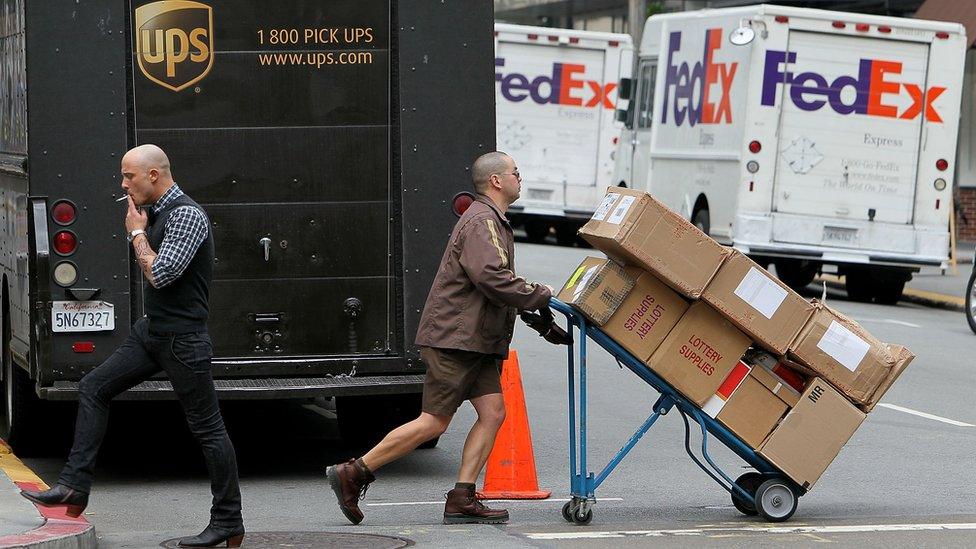
The surge of online shopping is changing how cities think about deliveries
Online shopping is skyrocketing. So what are cities going to do about it?
By the time veteran UPS driver Thomas "Tommy" Chu leaves work, he will have picked up and delivered hundreds of packages in New York City, making some 16 stops an hour as his company hurries to meet the online shopping rush.
But what may be his most impressive feat of the day precedes that scramble: at precisely 10:02 am, Mr Chu snags a parking spot.
This is no small victory in midtown Manhattan, where one survey, external found truck drivers can spend as long as 60 minutes circling for a space. Often, drivers simply give up and risk a ticket.
"Most times, you have no choice. If there's no parking, you have to double park," Mr Chu says.
Double-parked trucks, red brake lights and cardboard boxes littering the sidewalk: this is what the growth of online shopping looks like on the ground in America's largest city - and not just here.
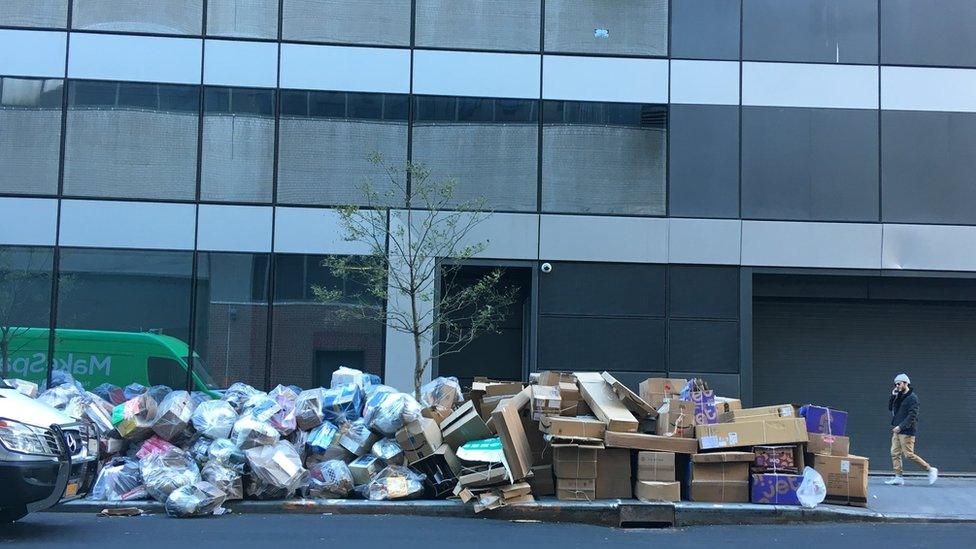
Mounds of boxes fill a pavement in New York
Parcel volumes surged almost 50% globally between 2014-2016, according to estimates from Pitney Bowes, external. They are on track to increase at rates of 17-28% annually up to 2021.
The rising numbers of deliveries are adding to concerns about traffic and pollution in rapidly growing cities around the world.
Forced rethink
In Europe and Asia, cities have barred deliveries during certain hours, built warehouses to centralise distribution and provided millions in funding to encourage firms to switch to quieter, greener equipment.
In the US, where the car has been king and the revival of dense city centres is relatively recent, discussions about how to handle the glut of online shipments were somewhat slower to start. But they're happening now.
"They've been forced to think more about it in cities because that's where we see the coming together of these pressures in a real, urgent way," says Professor Anne Goodchild, director of University of Washington's Supply Chain Transportation and Logistics Center.
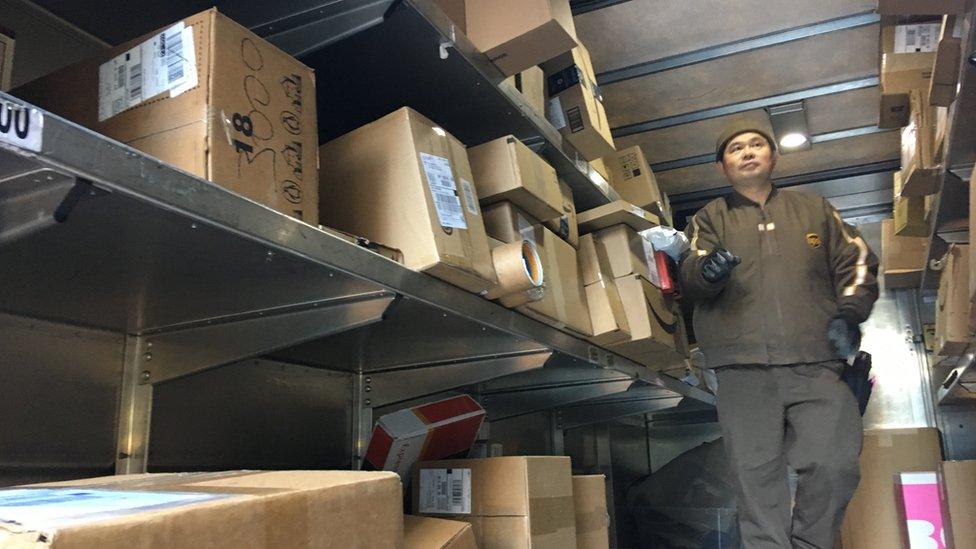
UPS driver Thomas "Tommy" Chu in his truck in Manhattan
"There's been a recognition at the municipal level that this has to now be what we plan for."
Online sales in the US, external remain a relatively small slice of total retail trade - about 10%, compared to roughly 15% in China, 17% in the UK and 18% in South Korea.
But they are growing fast, and are on track to increase about 16% this year.
Mr Chu, 49, started at UPS in 1990. He has watched as deliveries - mainly residential - have grown, as companies such as Amazon push to make near-instant home delivery the norm and as shopping habits change.
When he started, he says, "Nobody ordered water. Now, they order everything."
Environmental stress
Companies are investing heavily to meet demand, spending billions on new facilities and aircraft, increasing weekend hours, and installing new technology to speed shipments to customers.
Start-ups such as Deliv are getting in on the game and during the busy holiday season, firms employ thousands of seasonal workers to help cope.
On a recent weekday, it took Mr Chu roughly 30 minutes on truck-jammed streets to travel from the UPS hub to his first stop, an office skyscraper near Bryant Park, about 1.5 miles away.
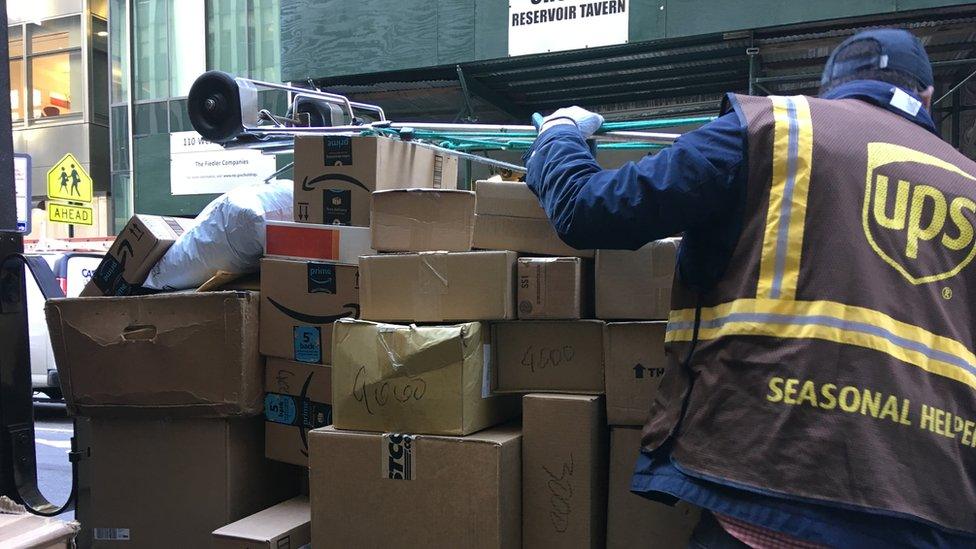
Companies are investing heavily to meet demand, spending billions on new facilities and aircraft
Once parked, he spent almost two hours dropping off packages in that building. And he was not the only courier at work: staff from FedEx and the US Postal Service also sped through the hallways.
"That's a lot of stress on the environment," says Jose Holguin-Veras, a professor at Rensselaer Polytechnic Institute, who has studied freight deliveries in New York.
Company solutions
Firms are experimenting with ways to make deliveries more efficient, and bring down costs.
They have embraced ideas like lockers, rolled out eBikes in select locations, and pushed for people to collect items in stores.
Amazon has even started selling a smart lock, which will allow couriers to let themselves inside homes to drop off packages, reducing failed deliveries.
But Prof Holguin-Veras says the issues accompanying increasing home deliveries won't be solved by the private sector alone.
"The problem is simply too complex. It's too tough to be solved by a single sector," he says.

A UPS eBike in Pittsburgh, Pennsylvania
This autumn, in response to the increasing congestion, New York Mayor Bill de Blasio announced a test ban on deliveries during commuter hours on some of the city's most crowded streets.
The city's Department of Transportation wants to get 900 businesses to shift deliveries to off-peak hours - currently there are 400 participants.
"Our challenge is really to figure out how to make the system work efficiently," says Diniece Peters, from New York City's transport department.

New York is experimenting with a delivery test-ban on some streets during peak hours
Different solutions
Cities in Europe have taken other kinds of steps. Paris, for example, has sponsored logistics hubs, while one of London's bus operators is looking at the possibility of using buses for parcel delivery.
In the US, where deliveries have become increasingly privatised, it will be tough to import some of the ideas being embraced overseas, says Prof Goodchild, who is studying urban deliveries with a group of city officials and private companies in Seattle.
Their work is focused on cutting back on the number of failed trips and reducing the time couriers spend inside buildings, among other efforts.
"There's a different background. I also argue there's a different set of solutions because of that," she says.

Global Trade
More from the BBC's series taking an international perspective on trade:

A major factor shaping the efforts is new technology.
Right now, deliveries are expensive, especially as firms such as Amazon opt to shield consumers from the costs.
Analysts expect that some day soon, companies will deploy robots for indoor deliveries, harness drones for remote drop-offs and enlist fleets of quiet, electric-powered driverless cars to make deliveries at night.
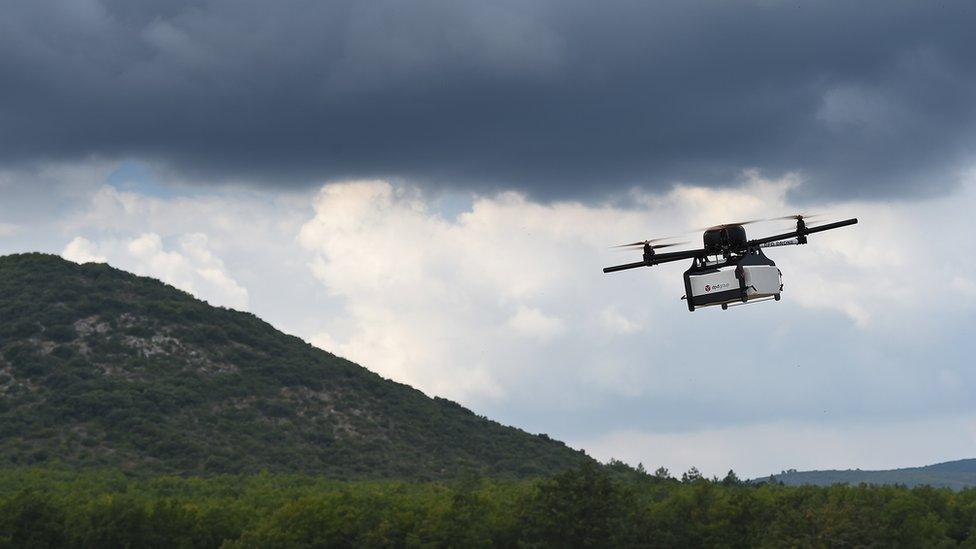
It is not yet clear whether developments like drone deliveries will help resolve urban congestion
City leaders are following the developments closely, says Stefan Knupfer, a senior partner at McKinsey, who has worked on reports about mobility initiatives, external and collaborated with a network of cities known as the C40.
"For all of us, this is a little bit of the beginning of a revolution," he says.
Where next?
Will the technological advances help cities resolve their current traffic and pollution problems? The jury is still out.
As stores close due to online competition, that could reduce consumer trips and commercial deliveries and help alleviate traffic.
But online retailers have also started investing more in bricks-and-mortar spaces, while other research suggests that people do not simply substitute clicks for trips.
"Right now, we have a lot of congestion... but when this automation transition takes place, and when the retailers start to close more and more stores, it's going to be very interesting," says Professor Jean-Paul Rodrigue, of New York's Hofstra University.
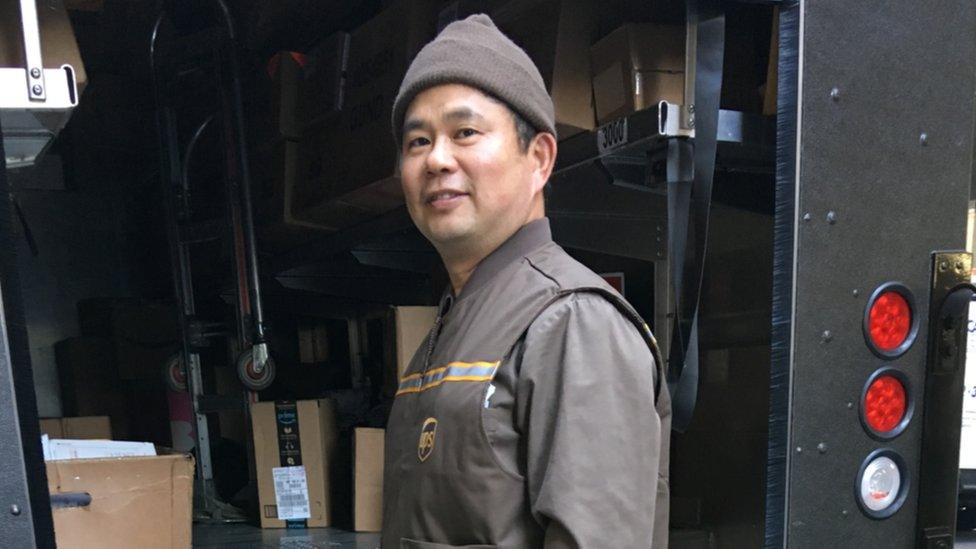
If there's no parking, you have to double park," says veteran UPS driver Thomas "Tommy" Chu
He expects companies such as Amazon to stop subsidising delivery costs, switching to a range of price options for customers.
For now, however, the effects of surging demand are clear.
As Mr Chu turns a corner in New York, he passes a skyscraper under construction that will add hundreds of new apartments to the area.
His prediction? "When this building finishes, they'll need another truck."
- Published27 January 2017
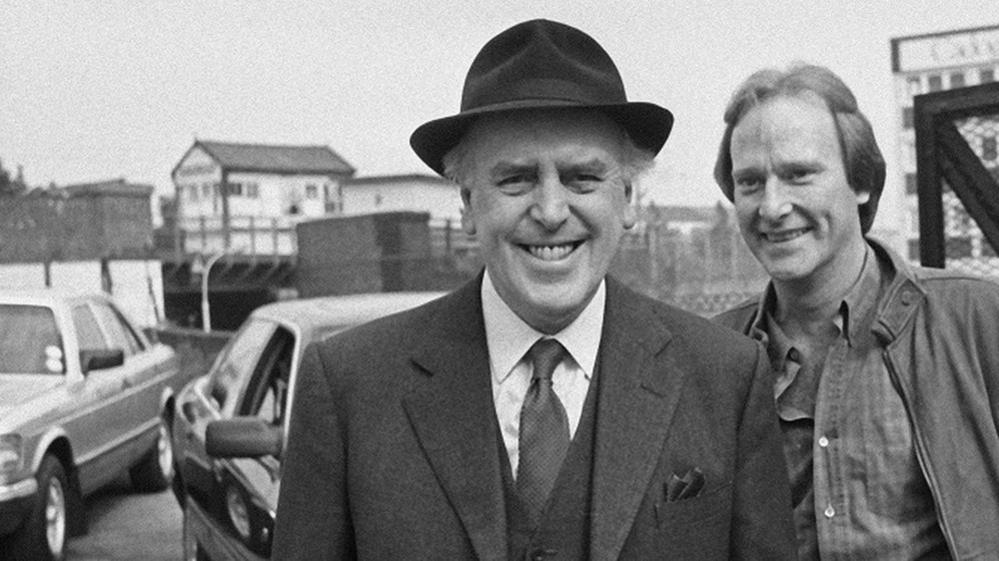
- Published6 July 2012

- Published11 November 2016
